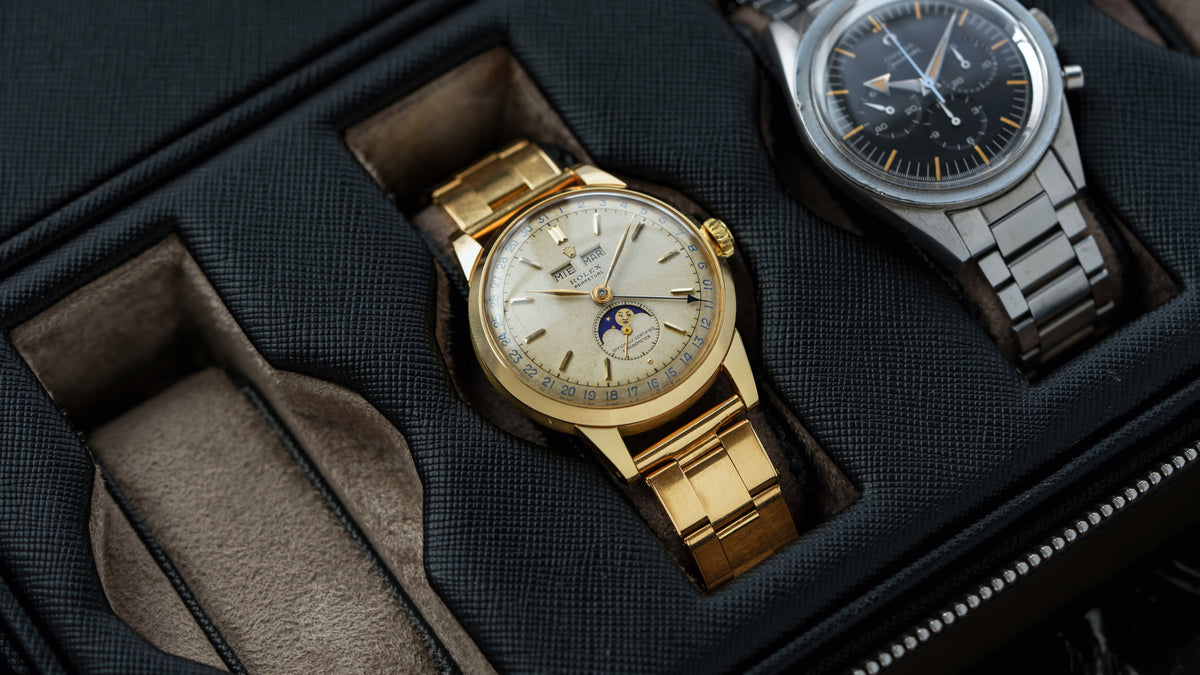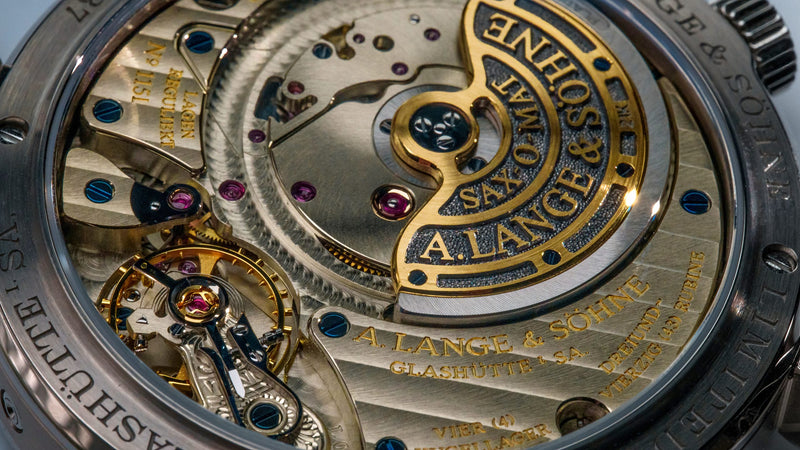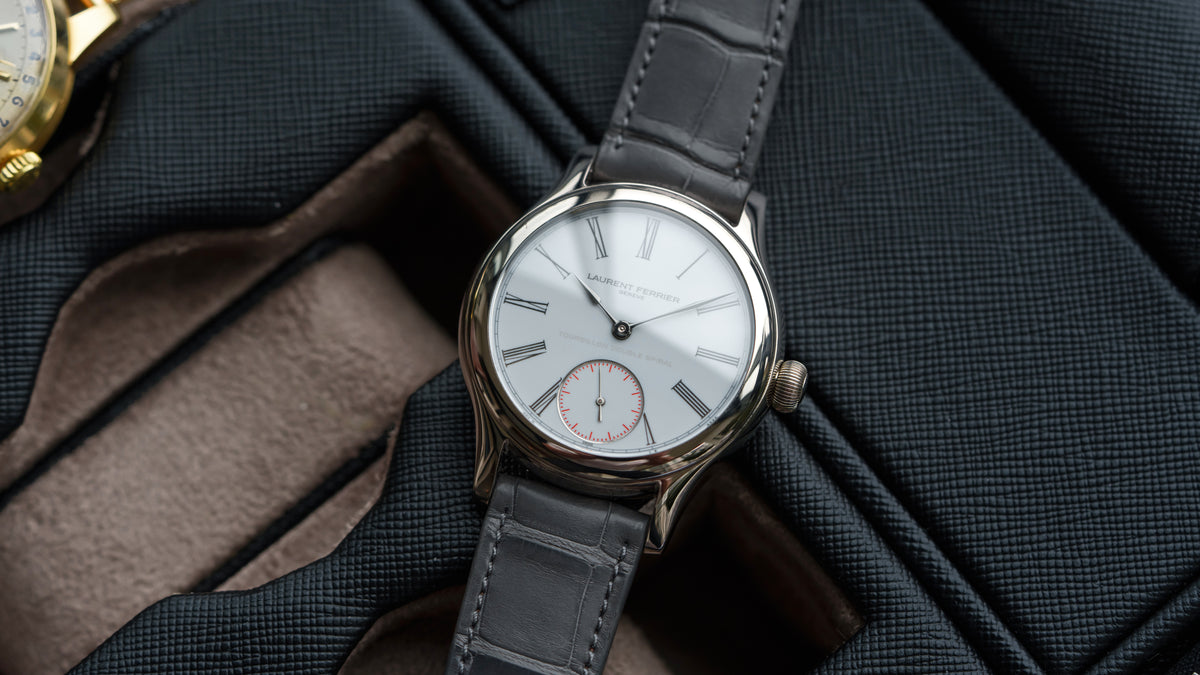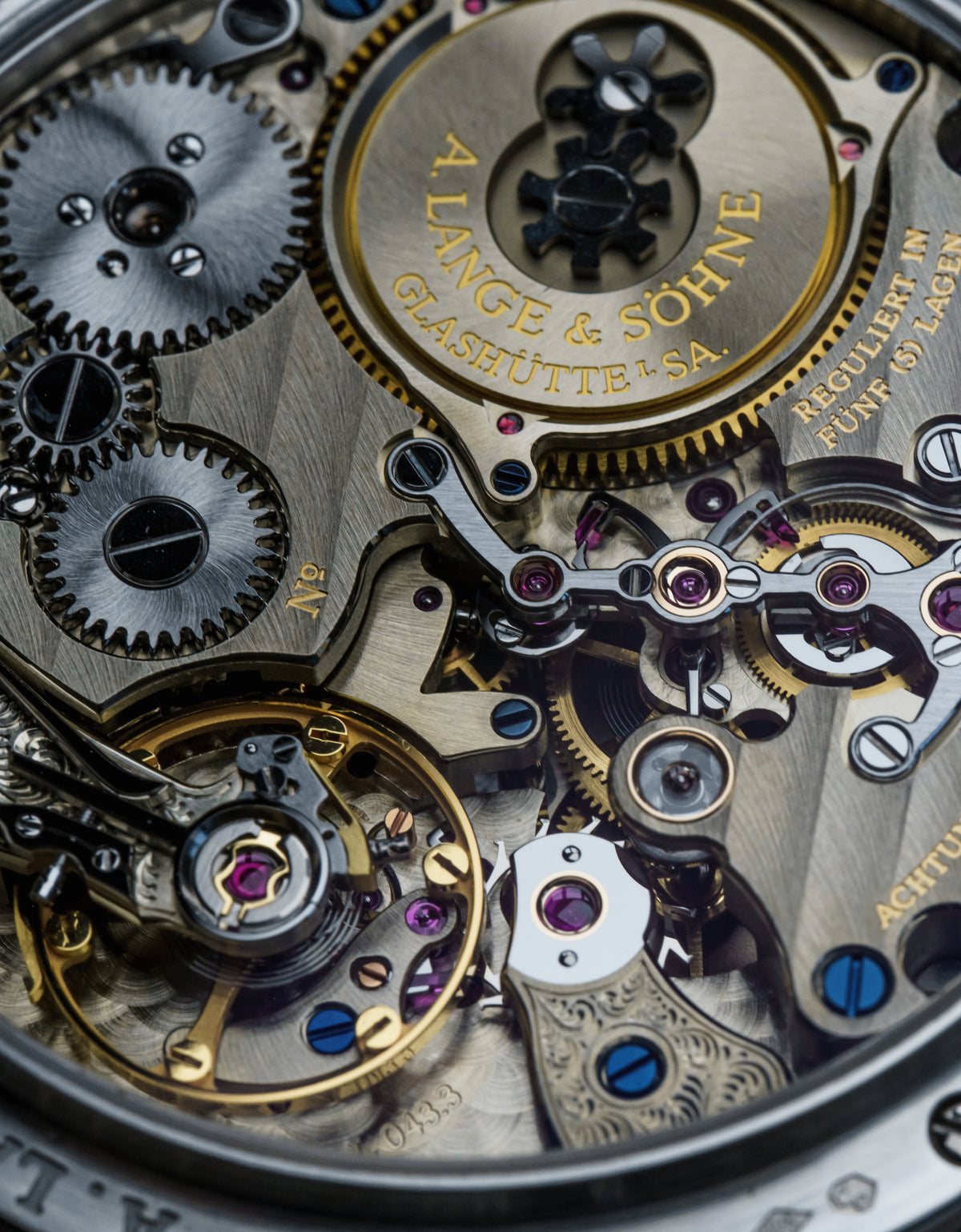Salmon Dial 14790ST Audemars Piguet Royal Oak
Around the late 80s, AP got wildly experimental with the mid-sized Royal Oak. Many speculate that the mid-sized case was utilized the testing ground to gauge demand for what might make sense to incorporate into the Jumbo RO, AP’s flagship. Day-Dates, Dual Times, and Annual Calendars flourished. Further, the some rather unusual colors made a debut as well. By introduction of the mid-90s, we were treated to lemon yellow, ‘Ferrari’ red, Jasper stone (yes, really), military, and this salmon dials. This salmon has a bit of mystery about it though, which has always been a part of the allure.

One can tell the three series of dials apart easily by tapisserie style and Audemars-line typography. The third series are separated by grande tapisserie. The first and second are petite. The first series has a block Audemars Piguet font, where each letter is of equal height. The second has higher caps on A & P. You’ll find many of the braver dials were launched in this third series. Yves Klein and Salmon were introduced from the second series, which means you get the delicious petite tapisserie in salmon. The salmon is quite uncommon, even relative to YK. Now, normally that’s where this would end because there’s not that much to be said about great mid-sized Royal Oak with a sexy dial color that mirrors the 14802 Jubilee. Well, it goes much deeper.

Now here’s where it gets fun. No one knows if salmon 14790STs are ‘original’. We know that these dials were made for the 14790. And while the dials are all genuine, most believe that AP never retailed a new 14790 with a salmon dial. Most believe that these dials were released to retailers in order to give the model a sales boost at end of cycle. We also know for sure AP offered to their VIP clients to have this dial installed at factory service. It used to be thought that they were 14800 dials, re-cased in 14790s, but the dials aren’t actually interchangeable. AP haven’t officially commented. But then at least one owner claims his to have been delivered as such, despite the lack of record. These dials are today, widely accepted as correct and desirable even if their precise origins are a bit mysterious. Whatever the precise origin, this petite tapisserie with Omega-3 does it for me.

This example sports a fantastic case, with signs of light sparing use and great edges. The dial is lovely, with light signs of patin in the plots and tapisserie. There’s no much more to say. It comes with its box and Certificate of Origin (I’d love to know what it says) from well-regarded Genevan retailer.









































0 comments
Write a Comment